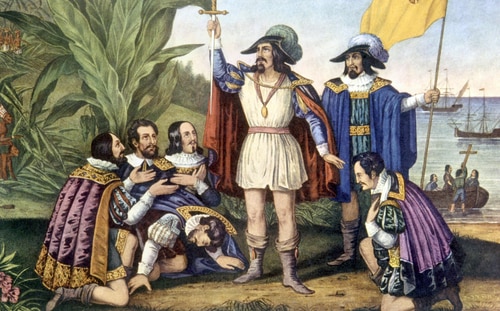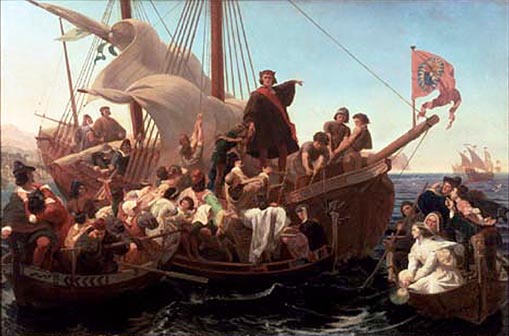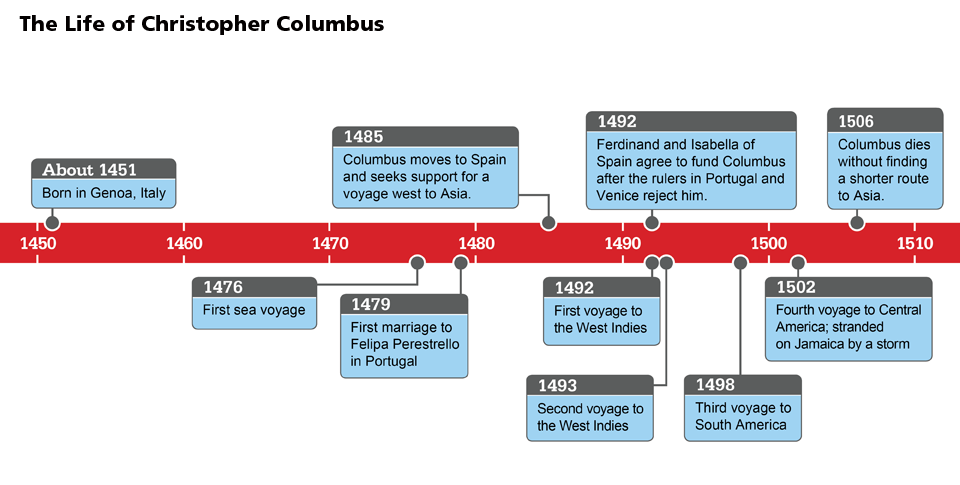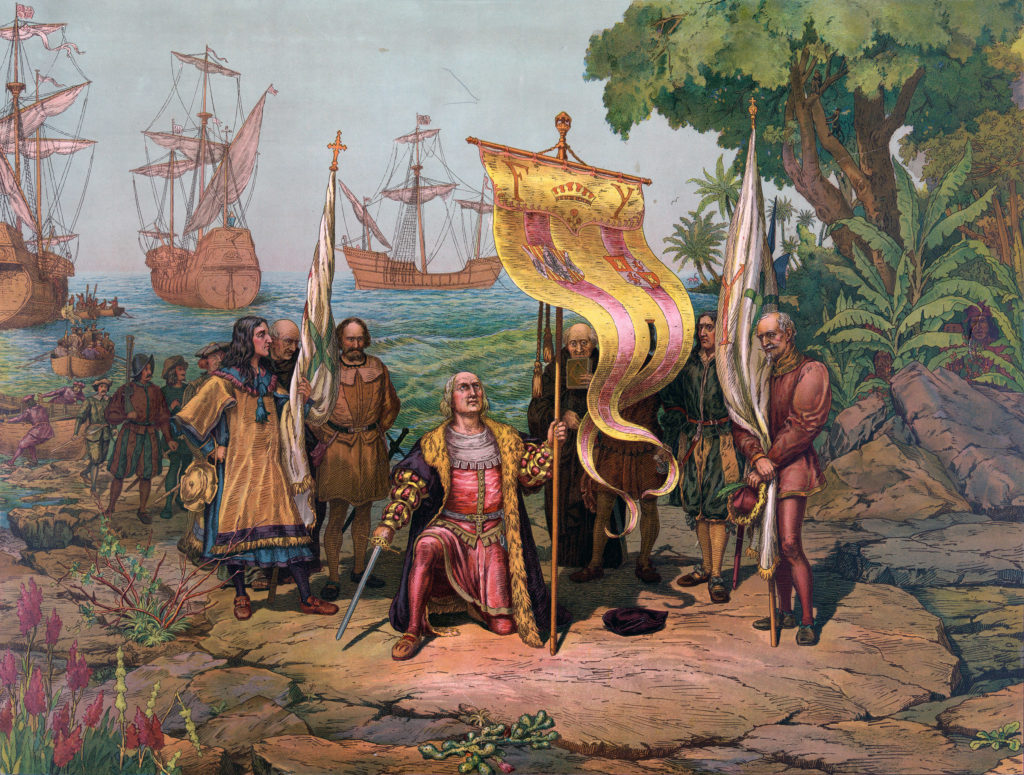With 17 ships, 1,200 men and boys including sailors, soldiers, colonists, priests, officials, gentlemen of the court, and horses, Columbus set out on another journey to the west. He left the port of Cadiz, Spain, on September 25, 1493, aboard the Mariagalante, his flagship. After the success of Columbus’s first voyage, he had little trouble convincing the Spanish Sovereigns, Ferdinand and Isabela, to follow up immediately with a second voyage.
Christopher Columbus First Voyage
Contents
Unlike the exploratory first voyage, the second voyage was a massive colonization effort, comprising seventeen ships and over a thousand men. The second voyage brought European livestock (horses, sheep, and cattle) to America for the first time. Columbus was given 17 ships and over 1,000 men. Included on this voyage, for the first time, were European domesticated animals such as pigs, horses and cattle.
What was Christopher Columbus’s first voyage?
The voyage made by Christopher Columbus was the find out an all-water route to Asia. After a long journey of almost two months, Columbus and his fleet landed on the Bahamas island which he called San Salvador. It was called Guanahani by the natives.

What was the main goal of Christopher Columbus’s voyage in 1492?
The main objective of Columbus’s voyage in 1492 was to find an all-water route to the Asian countries. He set sail from the port of Palos with three ships on his journey to find a western sea route to India, China and the famous lands full of valuable spices.
However, the fleet landed in the Bahamas island and claimed it for Spain. Later in the same month, Columbus spotted Cuba, which he mistook for China and finally, in December, they reached Hispaniola which Columbus thought was Japan.
Columbus set up a small colony in Hispaniola with thirty-nine of his men. He then returned to Spain with gold, spices and captives from Hispaniola whom he believed to be Indians. Columbus was received in the court with great honour.
Where did Christopher Columbus set out on his second voyage?
Columbus’ orders were to expand the settlement on Hispaniola, convert the natives to Christianity, establish a trading post and continue his explorations in search of China or Japan. The fleet set sail on October 13th, 1493 and made excellent time, first sighting land on November 3rd.

Leaving the Canary’s on October 13 1493, they covered an enormous distance and first came to Dominica in the West Indies November 3. Over the next 14 days, Christopher Columbus took the ships up from Dominica and found the Virgin Islands, the Leeward Islands and Puerto Rico. After continuing they landed at Hispaniola on November 22nd. Writings from people on the ships survived this voyage well and give a roundabout view of what happened.
Columbus Second Voyage Journal
Very minute parts of Christopher Columbus journals exist from this journey. During the next two weeks, the fleet moved north from Dominica, discovering the Leeward Islands, Virgin Islands, and Puerto Rico before arriving at Hispaniola on November 22. Returning to his fortress at Navidad on November 28, Columbus found that the fort had been burned and that the men he had left there on the first voyage were dead.

According to the account of Guacanagari, the local chief who had befriended Columbus on the first voyage, the men at Navidad had fallen to arguing among themselves over women and gold. Some of the men had abandoned the fort in the intervening months, and some of the rest had raided an inland tribe and kidnapped their women. The men of that tribe retaliated by destroying Navidad and killing the few remaining Spaniards.
Columbus then sailed eastward along the coast of Hispaniola, looking for a place to found a new colony. On December 8, he anchored at a good spot and founded a new town he named La Isabela, after the Spanish queen. The next several months were spent in establishing the colony and exploring the interior of Hispaniola.

The voyage back to Hispaniola was even worse since they now had to rethread the shoals and islands they had come through before, and now they had a headwind to work against. After four weeks, tired of the incessant headwinds, Columbus again turned south for Jamaica and confirmed that it was indeed an island.
Columbus finally returned to Hispaniola on August 20, 1494, and proceeded eastward along the unknown southern coast. But by the end of September, Columbus was seriously ill. His crew abandoned further explorations and returned to the colony at La Isabela.
What did Christopher Columbus discover?
Christopher Columbus never discovered what he actually wanted to discover. He was, from the very beginning of his career as an explorer, was determined to find a direct sea route from Europe to Asia. He never succeeded in finding it.
He, however, landed in America and became the first European explorer to explore and set up colonies in America since the Vikings settled there.
Where did Christopher Columbus land?
Columbus, in his life, made four voyages, during which he landed in various Caribbean islands that are known as the Bahamas islands today. He also landed in Hispaniola and set up colonies there. He explored the coasts of central and South America while expanding the colonies in Hispaniola.

How did Columbus treat the native people?
Christopher Columbus was reported to be brutal towards the native people of the Caribbean islands. Columbus was appointed the governor and viceroy of the Indies and he imposed extremely hard disciplines on the people. The native people often showed their displeasure towards his methods through revolt, in response to which Columbus tortured them.
He ordered a ruthless crackdown on the protestors in which many people were killed. Hence, he was no different from the cruel colonisers who considered themselves racially superior to others and oppressed the native people to get what they wanted.
How many voyages did Columbus make?
Christopher Columbus made a total of four voyages in his lifetime.
More Info On- Routes of Christopher Columbus, Ships of Christopher Columbus